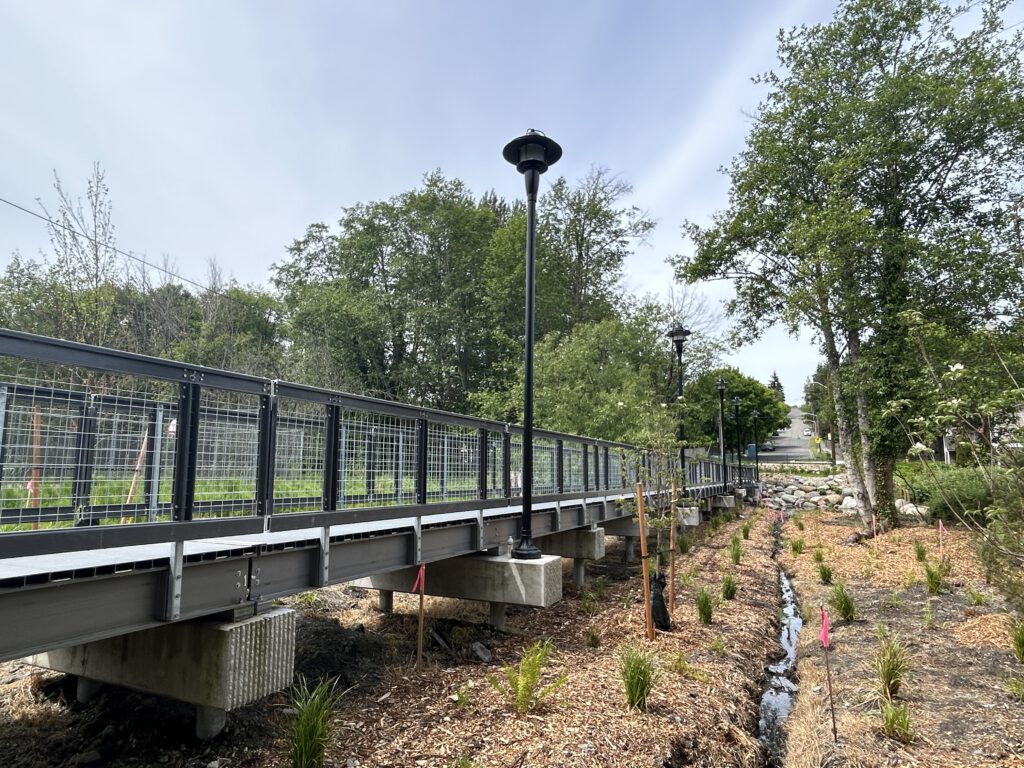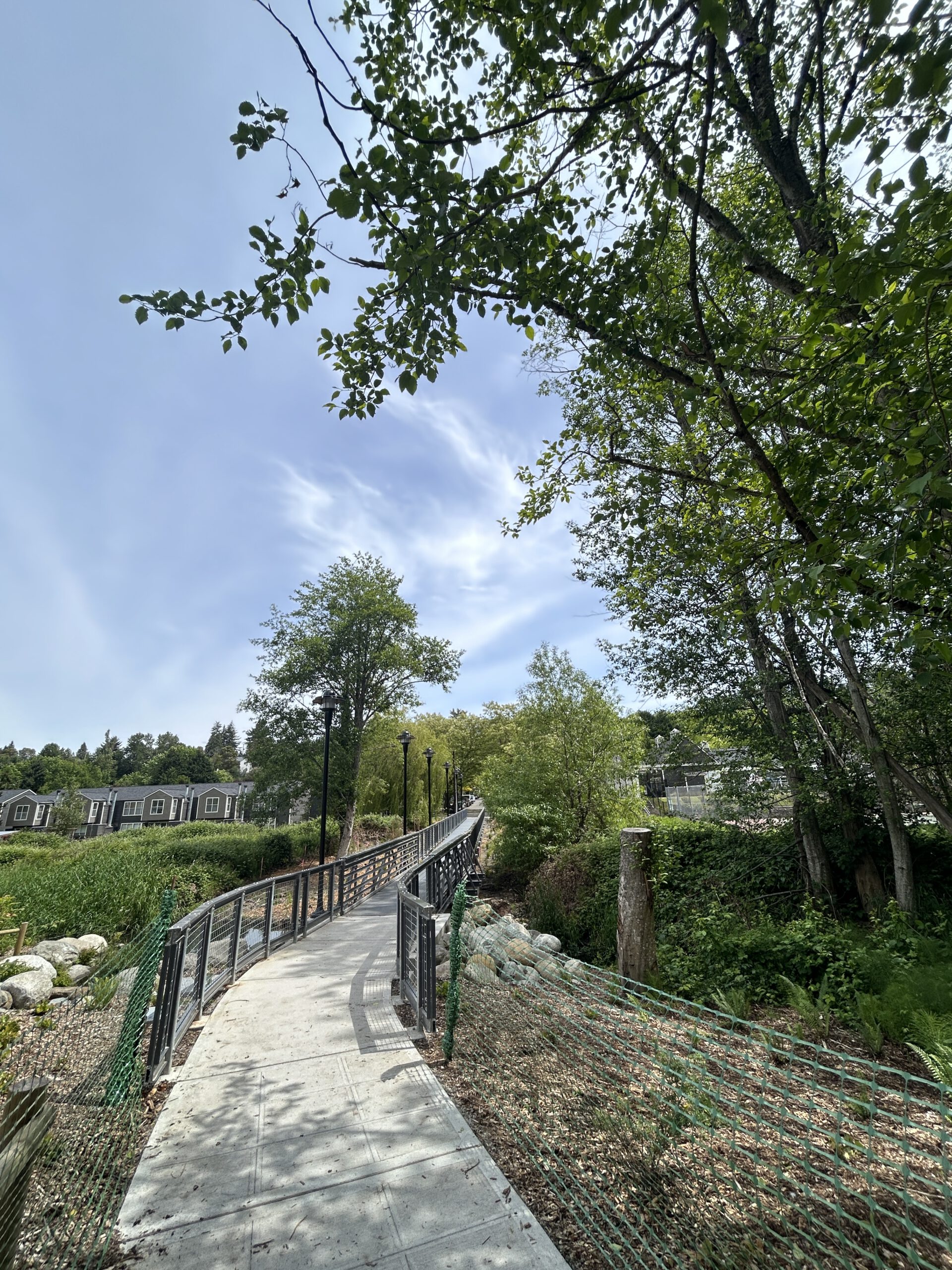In 2021, Areté Structures had the privilege to provide an FRP bridge and boardwalk for a Seattle Public Utilities urban drainage project. Designed by MIG, Inc. and known as the “Longfellow Natural Drainage System”, this project was unique for Areté. It was the first Areté project to combine boardwalks and truss bridges, but it is also unique in its location. Most of our FRP trail bridges and boardwalks are in rural or remote areas, which is understandable given the benefits of FRP for such a location. This project, however, is an exception. The Longfellow Bridge is in a dense residential neighborhood in a large city. The structure and its context make for an interesting case study in urban infrastructure and civil engineering.
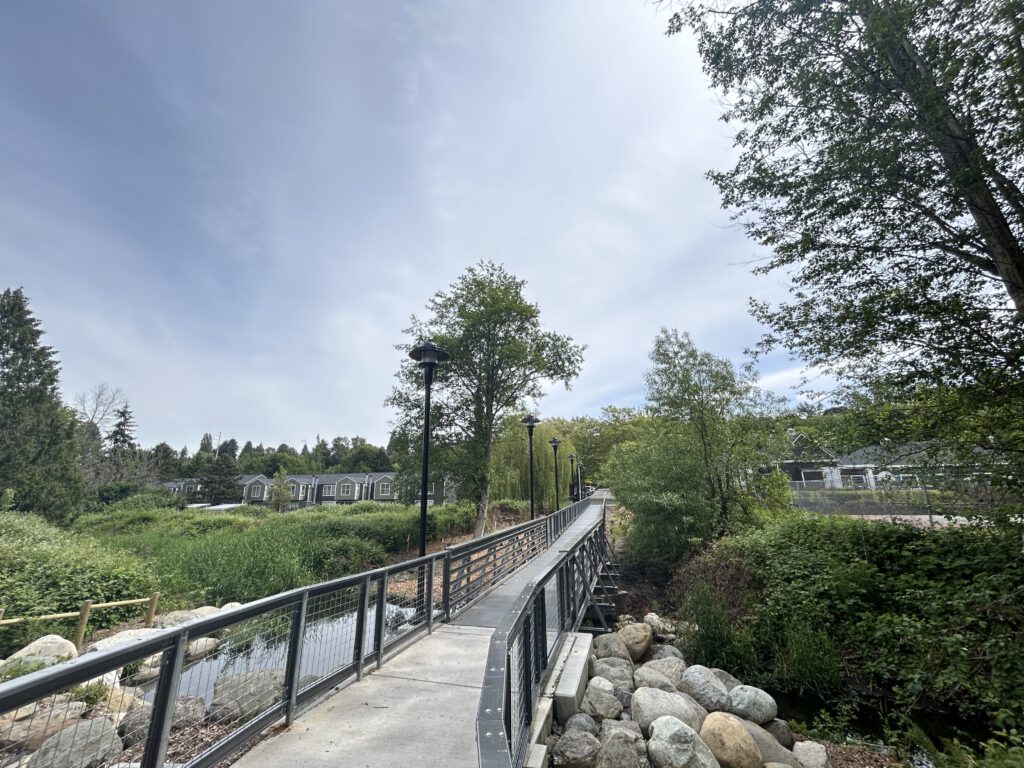
Longfellow Bridge Seattle Washington – Arete Structures
Urban wetlands serve several important functions. They improve water quality by filtering urban runoff, they help mitigate flood risk by retaining and slowing drainage, and they provide wildlife habitat. However, restoring urban wetlands can introduce challenges by physically dividing neighborhoods and removing existing transportation infrastructure. The challenge for the Longfellow Drainage was this: To improve the health and function of the local community and economy while improving the health and function of the local environment and civil infrastructure. The project team incorporated Areté’s bridge and boardwalk to help meet this challenge.
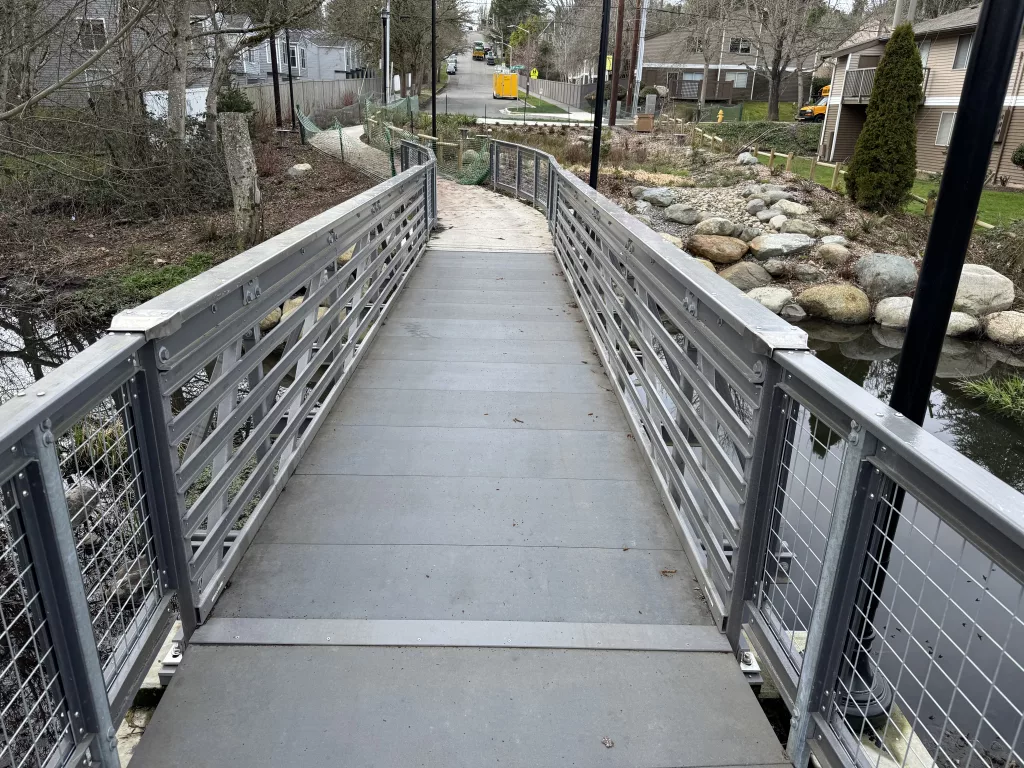
The structure is comprised of eleven 12-ft stringer boardwalk spans and one 26-ft truss bridge span. This FRP superstructure sits atop cast-in-place pile caps that also support utility lines and pathway lampposts. Areté used Strongwell’s Extren 525 series FRP for beams and railing at the boardwalk as well as the truss members at the bridge. Safplank decking with a non-slip coating was used throughout for the walking surface. The project designers took advantage of this consistency in materials between Areté’s truss bridge and boardwalk. It allowed them to customize span lengths as needed while maintaining a consistent aesthetic.
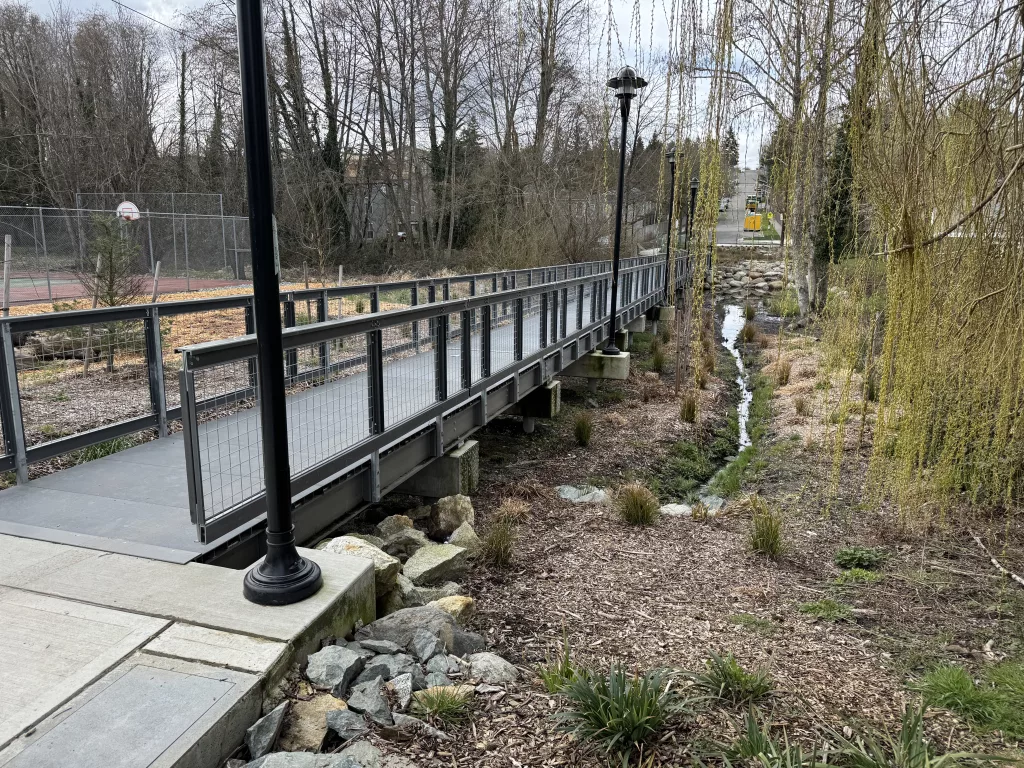
The Longfellow bridge and boardwalk now span a restored wetlands. The structure provides a connection for students to get to school, residents to walk their dogs to the park, and neighbors to walk or bike to each other’s homes. It is also a welcome change of pace to depart the traffic-adjacent sidewalks and enjoy a little bit of nature within the city. The elevated structure enables a high volume of users to experience an otherwise inaccessible natural area without impeding the wetlands’ function or causing erosion. While recreational use is certainly a component of its purpose, the Longfellow bridge also serves as an important piece of urban civil infrastructure in people’s daily lives.
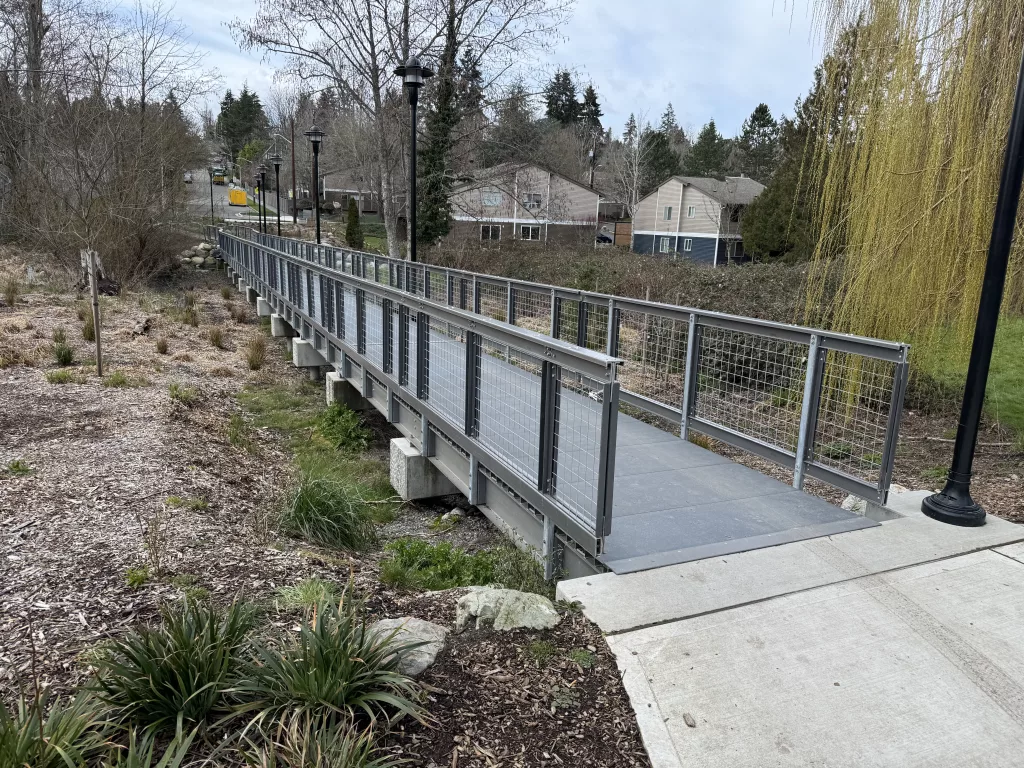
As cities and towns grow and develop, it will become increasingly necessary to address the issues of elevated flood risk, pollutants in runoff, and limited wildlife habitat. The Longfellow Natural Drainage System project is a great example of how good design and collaboration can address these issues while respecting the lives and well-being of those who live there. We are honored and humbled to have been a part of this project. We’re confident that the Longfellow bridge will continue to serve the people of Seattle for generations to come.
